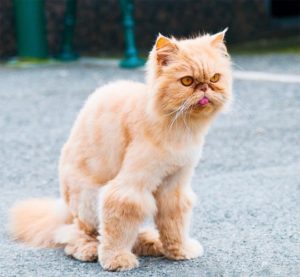Cat Facts: Tongue and Whiskers
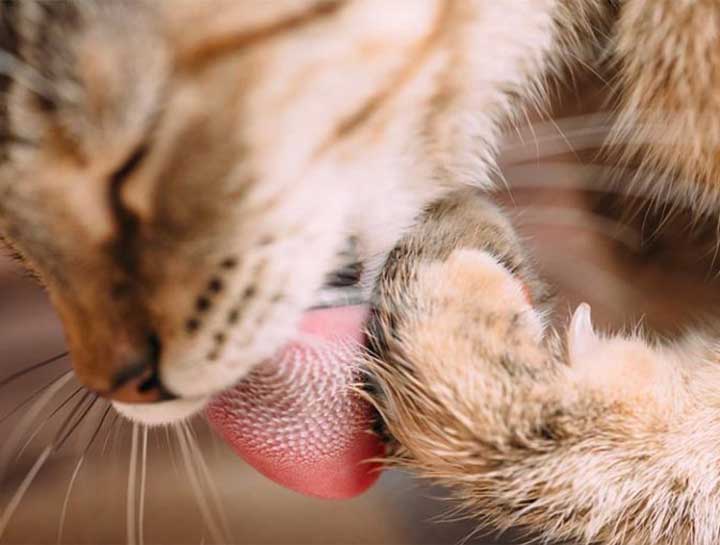
If you own a cat or are owned by a cat, then you already know how amazing they are. Cats possess unique features that we may take for granted, like their sand-papery tongue or wispy whiskers, but there’s far more to these parts than meets the (human) eye.

The Tongue
Cats are known for their curious nature, their ability to sleep most of the day, and their grooming habits. Scientists believe cats may spend up to 24% of their waking hour's grooming, while others put the number much higher, at up to 50%. Their tongue is equipped for the task, being covered in hundreds of tiny backwards-facing spines called papillae that are about as stiff as your fingernails—for good reason too, as both papillae and fingernails are made of keratin. The front half of the tongue has larger, stiffer papillae than the back half, which is made up of small, soft papillae.
Once thought to be cone-shaped, studies have shown that each papilla actually has a hollow groove. Not only do these grooves help to clean meat off of bones (no wonder repeated licks from a kitty can become painful!), they can wick up saliva from the mouth and distribute it through the fur and onto the skin.
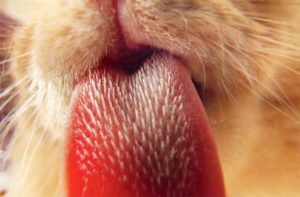
This process of wetting the fur serves to clean the fur (depending on your definition of clean), as the saliva contains enzymes that can break down bacteria, making it a sort of “spit soap”. People who are allergic to cats are often allergic to the proteins found in cat saliva, so it’s not necessarily the fur they are allergic to, but rather the saliva that dries on the fur.
Wetting the coat with saliva can also serve to help cool down a cat on a hot day, as cats have very few sweat glands. As the saliva evaporates, their body temperature drops. The only cats for which these papillae are not long enough to reach down to the skin are Persians and other cats with extremely long and thick coats.
Makes sense why these kitties need additional help with grooming—lest their coats mat.
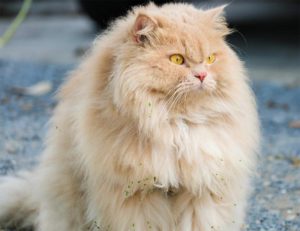
(Maybe not that kind of help!)
For short to medium hair cats though, papillae act as a built-in brush. If the cat finds a tangle, the papillae can swing down deeper into the coat to comb out the knot.
So amazing are the properties of the cat’s papillae-covered tongue, that researchers have tried to copy the idea for a more effortless detangling brush that is easy to clean. They even believe studying the cat’s tongue will lead to development of better ways to apply lotions or medications to areas of the skin that are a bit on the hairy side.
The Whiskers
And what about those aforementioned whiskers? The fact that cats sleep most of the day means they need to navigate the world around them when they are active at night. Well-placed whiskers help them do just that. Completely symmetrical, a cat has a dozen on each side of the nose, making 24 in total. This even distribution allows a cat to accurately measure the world around them.

Whiskers aren’t just found on the muzzle though, they can be found on their chin, above their eyes, and at the backs of their front legs too. Thicker and stiffer than normal fur, these hairs are deeply rooted and attached to tissues in the muscular and nervous systems. It’s this attachment to nerve endings that make them highly sensitive, allowing the cat to detect even the slightest movements of air or changes in air currents. Whiskers allow the brain to determine the location of objects based on how the air moves around objects, creating a sort of radar system. Whiskers, particularly the ones found on the backs of their forelegs, help cats locate and catch prey.
Whiskers also protect the eyes by alerting the cat that something is too near their face and that a blink—or completely shutting the eye—is needed. A cat’s close-up vision isn’t that great, so whiskers come to the rescue again, feeling for objects and letting the cat know how close they are. Whiskers can even help determine if cats can fit through the width of an opening, or if they will fit in that great new box that just arrived!
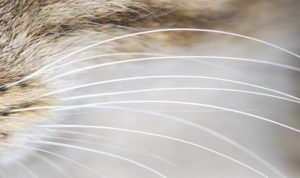
Whiskers even act as a sort of “mood ring,” as closely observing their position can let you know how your kitty is feeling. Relaxed whiskers mean just that, a relaxed, happy cat. But whiskers that are pulled back against the face can indicate fear, while a curious cat will push them all the way forward to inspect a new situation, much like a detective pulling out a magnifying glass.
To be sure, a cat heavily relies on their whiskers for many different reasons, some of which scientists don’t fully know yet. It is known, however, that if you trim a cat’s whiskers off, they become disoriented and even incapacitated until they grow back. A scary proposition for them to be sure!
Researchers are looking into equipping robots with sensors that work much like cat’s whiskers to help these machines circumvent objects in their path. Just don’t let your cat know that their amazing features are being used to make our lives easier, or they really will think they own us!

Northeast Animal Hospital and Downtown St. Pete Vet Clinic are sister practices located in sunny St. Petersburg, Florida. We are devoted to helping pet owners connect with their pets while educating them on topics that will help keep their pets happy and healthy. If you are local to St. Pete and its surrounding areas and have any questions, please don’t hesitate to contact us. If you’ve found us through a web search, we hope we’ve helped answer your question on this subject. If you reside beyond the Tampa Bay area we recommend you contact your local veterinarian for any further needed assistance.

